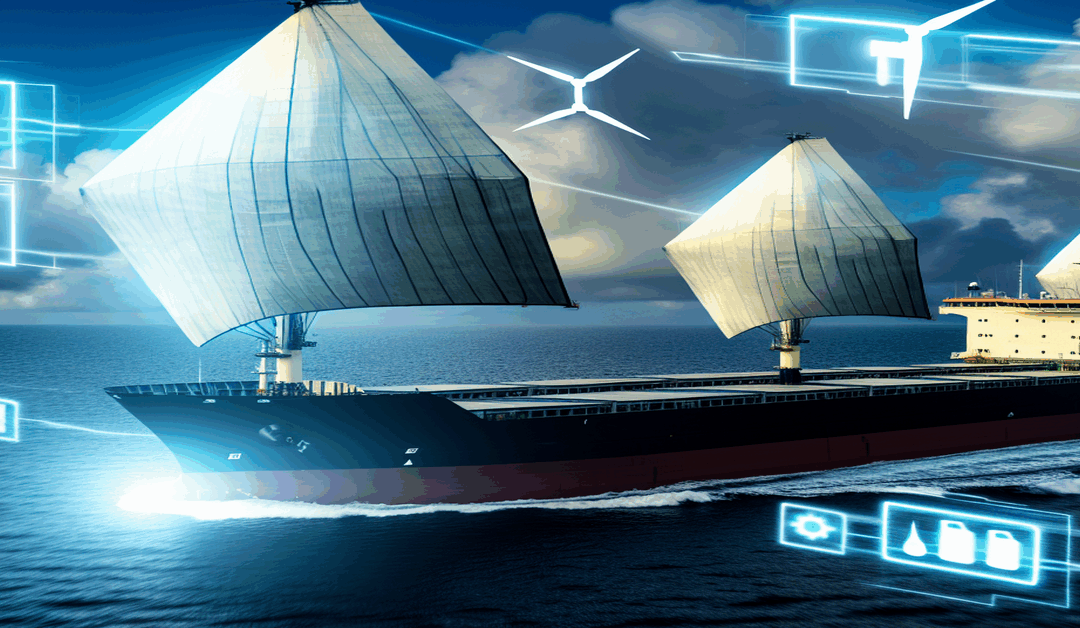Navigating the High Seas: Innovative Technologies Steering the Shipping Industry Towards Lower Emissions
The shipping industry is at a critical juncture, facing the urgent need to reduce its carbon footprint and embrace sustainable practices. As global trade continues to expand, the maritime sector is exploring innovative technologies to mitigate its environmental impact and chart a course towards a greener future. In this article, we’ll delve into the cutting-edge solutions steering the shipping industry towards lower emissions, focusing on digital navigation, wind-assisted propulsion, and alternative fuels.
Digital “Google Maps for the Sea”
Imagine a world where ships can navigate the vast oceans with the same ease and efficiency as a car using Google Maps. This is becoming a reality thanks to advanced digital platforms and navigation tools that provide real-time data on weather, sea conditions, vessel performance, and emissions. These sophisticated systems optimize routing to minimize fuel consumption and emissions, effectively creating a “Google Maps for the sea.”
The benefits of these digital tools extend beyond just route optimization. They enable better fleet management, remote maintenance, and data-driven decision-making, all of which contribute to improved energy efficiency. By leveraging the power of digitalization, shipping companies can make informed choices that reduce their environmental footprint while maintaining operational excellence. As highlighted by Gemma Ware, digitalization is a critical complement to other technical measures and plays a vital role in meeting global emissions targets and regulations.
Harnessing the Power of the Wind: Wind-Assisted Propulsion
While digital navigation optimizes routes, wind-assisted propulsion takes advantage of a timeless and abundant resource—the wind. Innovative rigid sail technologies, such as WindWings, are revolutionizing the way ships harness wind power to reduce fuel consumption. These modern sails can be retrofitted onto existing vessels, offering an immediate and scalable solution to cut carbon emissions by up to 30%.
A prime example of this technology in action is the bulk carrier Pyxis Ocean, chartered by Cargill. Equipped with impressive 37-meter-high solid wing sails, this vessel showcases the potential of wind propulsion systems to assist in long-distance voyages. The adoption of wind-assist technologies, including rotor sails and automated wings, is rapidly growing as more shipping companies recognize their potential to significantly reduce emissions and contribute to decarbonization efforts.
Fueling the Future: Alternative and Carbon-Neutral Fuels
While digital navigation and wind-assisted propulsion optimize fuel efficiency, the shipping industry is also exploring alternative and carbon-neutral fuels to further reduce its environmental impact. Biofuels, synthetic fuels, and other low-carbon options are gaining traction, although challenges related to availability and costs persist.
To incentivize the adoption of cleaner fuels and promote methane abatement in combustion engines, new methodologies for marine bio-bunker fuels and methane emission reduction technologies have been developed. These standards not only enable the generation of carbon credits but also ensure sustainability and traceability throughout the entire lifecycle of the fuel, from “well to wake.” By supporting the economics of greener fuel adoption, these methodologies play a crucial role in accelerating the transition towards a more sustainable shipping industry.
Emerging Technologies on the Horizon
Beyond digital navigation, wind-assisted propulsion, and alternative fuels, several other emerging technologies hold promise for reducing emissions in the shipping sector:
1. Onboard carbon capture systems: Researchers are investigating the potential of capturing and storing CO2 emissions directly on ships, although space constraints and infrastructure challenges remain hurdles to overcome.
2. Shore power and batteries: By utilizing electricity from shore-based sources or onboard batteries while docked, ships can significantly reduce their reliance on fossil fuels during port stays.
3. Waste heat recovery: Innovative systems that recycle the heat generated by ship engines can improve overall fuel efficiency, further reducing emissions.
Charting the Course Ahead
Decarbonizing the shipping industry is no small feat, and it will require a concerted effort and an integrated approach that combines digitalization, wind power, alternative fuels, and emerging technologies. While the transition to greener shipping may come with significant costs—potentially increasing expenses by up to 100% for some vessels—it is a necessary investment in the future of our planet.
To achieve the International Maritime Organization’s (IMO) ambitious emission reduction goals for 2030 and beyond, collaboration across industry stakeholders and the establishment of supportive regulatory frameworks will be essential. By working together and embracing innovative technologies, the shipping industry can navigate towards a more sustainable and environmentally responsible future.
As we embark on this transformative journey, it is clear that the shipping industry is at the forefront of a green revolution. Through the adoption of smart digital navigation systems, wind-assisted sails, sustainable fuels, and other groundbreaking technologies, maritime transport is charting a course towards lower emissions and a brighter, cleaner future for us all.
#ShippingIndustry #GreenShipping #EmissionReduction
-> Original article and inspiration provided by ReviewAgent.ai
-> Connect with one of our AI Strategists today at ReviewAgent.ai

